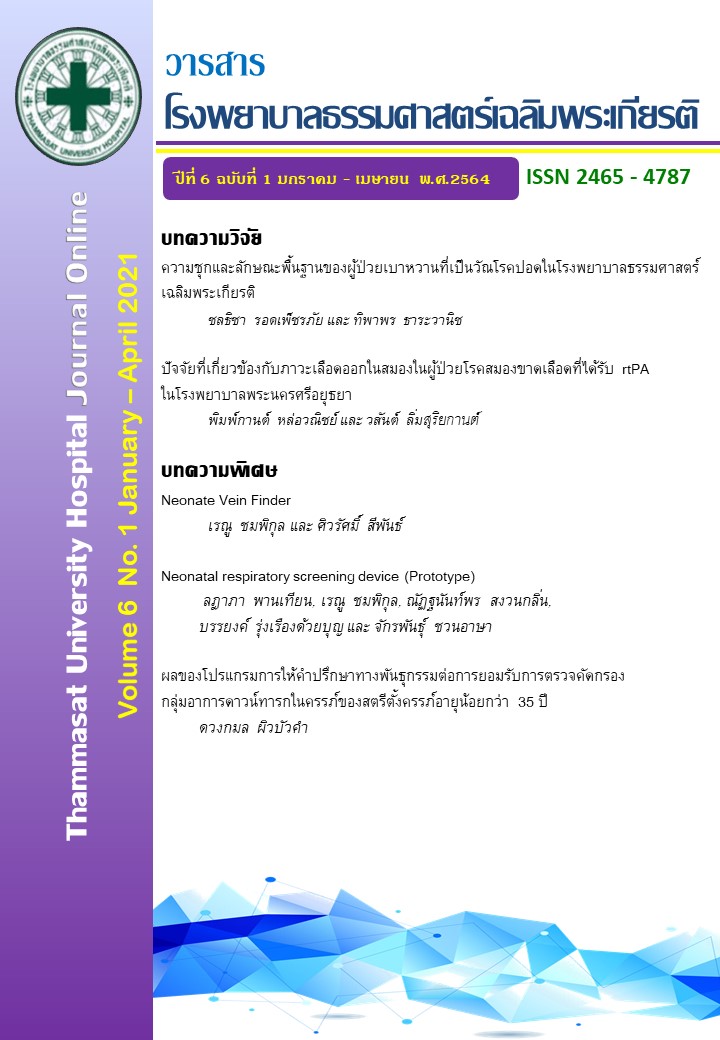Neonatal respiratory screening device (Prototype)
Keywords:
respiratory monitoring, apnea monitor, breathing pattern in newbornAbstract
Respiratory status can reflect health condition in the newborn. Respiratory screening in transitional period, is a process that can help the nurse identifying the infant with health problem and provide early diagnosis existing for further appropriate treatment.
The equipment for monitoring respiratory pattern is expensive and being used only in intensive care unit. Authors want to develop the tool that can screen infants with respiratory distress and study for the equipment efficacy and accuracy.
Researcher designed the equipment based on the review of the relevant theory and literature. The concept and the prototype of equipments which screen abnormal respiratory pattern in newborn infant have been tested. This test is jointly done with mechanical engineer. The special features of the equipment are 1) the equipment is small, easily mobile and can be hanged over the infant’s bed, operated by electricity through adapter which provide better safety for medical use when comes into contact with human and the power is more stable than battery.2) Sensor for detecting the breathing is small and rounded which is made of soft silicone and is not harmful to the skin to detect the accelerated speed. The vibrator is attached to the of the infant. This can detect breathing rate, quality of breathing and duration of apnea. 3) The result screen includes graph that shows the breathing pattern in order to see the nature and form of breathing in infant. It also shows the respiratory rate, pictures and warning signal of apnea in accordance with the set up parameters.
References
Pillitteri A. Maternal & child health nursing care of the childbearing & childbearing family. Philadelphia: Wolters Kluwer Health; Lippincott Williams & Wilkins. 2014.
Sripoun S. Transient Tachypnea of the Newborn: Labor Room Nurse’s Role. NJPH 2018; 11-19.
Corbishley P and Rodríguez-Villegas E. Breathing Detection: Towards a Miniaturized, Wearable, Battery-Operated Monitoring System. IEEE Trans Biomed Eng. 2018; 55: 196-204.
Kohn, S., Waisman, D., Pesin, J. et al. Monitoring the respiratory rate by miniature motion sensors in premature infants: a comparative study. J Perinatol. 2016; 36: 116-20.
Nepal K, Biegeleisen E, Ning T. Apnea Detection and Respiration rate Estimation through Parametric Modeling. Proceedings of the IEEE 28th Annual Northeast Bioengineering Conference, Philadelphia, Pennsylvania. 2002; 277-278.
Nina Tewel. Application of MEMS accelerometer for baby apnea monitoring under home conditions. Acta Bio-Optica et Informatica Medica. 2010; 4: 390-3.



